Introduction
The sight of vibrant blossoms swaying with the breeze often brings an unmatched joy to the heart. Gardening, beyond being a hobby, is a therapeutic escape that enriches our surroundings and our lives. Yet, much like the art of cooking, successful gardening requires the right ingredients at the right time. Among these ingredients, timing is crucial, especially when it comes to planting flowers. For gardeners across various climates and regions, the key lies in understanding the unique planting calendar based on your zip code. In this guide, we unravel the significance of this insightful tool and how it can transform your garden.

Many budding and seasoned gardeners have experienced the disappointment of withered blooms and stunted growth. The solution often lies not in the plants themselves but in the strategy employed. Utilizing a flower planting calendar tailored to your zip code ensures that your garden flourishes with an explosion of colors throughout the seasons. In this comprehensive exploration, we delve into the practical wisdom of zip-code-specific planting calendars, and how this approach can lead to gardening success.
Understanding Flower Planting Calendars
Definition and Purpose
A flower planting calendar is a gardener’s roadmap that outlines the optimal planting dates for different plant species relative to a specific geographic area. While general guidelines are often available, these calendars provide precise recommendations tailored to local climates. They account for frost dates and temperature variances that affect plant growth, ensuring healthier blooms.
The primary role of a flower planting calendar is to prevent common gardening pitfalls. By aligning planting activities with these guidelines, gardeners can enhance the growth potential of their plants, resulting in lush landscapes and vibrant gardens.
Importance of Zip Code Specific Calendars
The United States hosts diverse climatic zones, each with its own planting challenges and opportunities. Flower planting calendars based on zip codes leverage local climate data to provide tailored advice, enhancing their accuracy and usefulness. Whether you’re in the humid subtropics of Florida or the arid deserts of Arizona, zip-code-specific recommendations can make a marked difference in gardening outcomes.

At Plantology, we understand these intricate climatic nuances. Our range of plants, such as the Adonidia Palm, can bring a touch of tropical elegance to your space. And with a tailored planting calendar, you can ensure their successful cultivation.
The Influence of Climate and Geography on Planting
Climate Zones and Their Impact
Climate is the determinant of when, how, and what you plant in your garden. The U.S. Department of Agriculture (USDA) divides the country into climate zones based on annual minimum winter temperature averages. These zones range from the warmth of Zone 13 to the chill of Zone 1. Understanding your climate zone is pivotal when planning your garden.
For example, the Blue Agave thrives in warmer zones but requires careful winter care in cooler regions. Using a zip-code-based planting calendar helps mitigate climate-related challenges, aligning planting schedules with the optimal seasons for germination and growth.
Geographic Considerations
Beyond climate, geographical features such as altitude, proximity to water bodies, and soil types also influence planting. Gardens at higher altitudes can experience late frosts, while coastal areas may offer milder climates. Tailoring your planting schedule according to these factors ensures your garden is in harmony with its environment.

How to Use a Flower Planting Calendar
Accessing Your Calendar
Most flower planting calendars are available through local agricultural extensions or online platforms. Plantology offers a comprehensive planting calendar service to our customers, ensuring that our plants bloom beautifully under their care. Simply enter your zip code, and you will receive specific planting guidance suitable for your area.
Planning by Season
Once you have your calendar, begin planning the garden layout. Divide the plants based on the recommended seasons for planting. Spring often heralds the planting of annuals and perennials, whereas autumn is ideal for bulbs. With zip-code-specific calendars, you can maximize the flowering period and extend the visual appeal of your garden throughout the year.
Spring Planting
In most regions, spring serves as the beginning of the growing season. Flowers such as the Lily of the Nile thrive well when planted in early spring. These hardy flowers bring a burst of blue glory to your garden, creating an enchanting landscape.
Summer Planting
Summer planting focuses on heat-tolerant species that can withstand the season's heat. Succulents like the Caribbean Agave are perfect for summer, adding texture and architectural interest to the garden.
Fall Planting
As temperatures cool, focus shifts to plants that will establish roots during the winter months. Consider planting hardy perennials and ornamental grasses that will bloom with renewed vigor in spring.

Factors to Consider in Your Planting Plans
Frost Dates and Plant Hardiness
Frost dates indicate the average last frost in spring and the first frost in fall. Understanding these dates is critical, as planting too early may expose young plants to frost damage. Conversely, planting too late may not allow sufficient time for root establishment before cold weather sets in.
Utilizing a planting calendar helps minimize these risks. Through careful planning, gardeners can ensure that tender plants such as the Aglaonema Silver Bay are sown safely, ready to thrive when the conditions are optimal.
Soil Preparation
Effective soil preparation is the foundation of a thriving garden. Understanding your local soil composition is crucial. Many online resources, including Plantology’s soil guides, can help identify necessary amendments to improve drainage and soil fertility.
Incorporating organic matter into the soil during fall prepares the garden bed for spring planting. This practice enhances nutrient availability, setting up your spring plants for a robust start.
Tailored Plant Recommendations
Plant Selection by Region
Tailoring your plant choice to your region enhances success rates and reduces unnecessary strain on plants. Choose native plants or those adapted to your local conditions for higher survival chances.
For southern gardeners, consider the Alexander Palm, a magnificent addition that thrives in warmer climates. Northern gardeners, on the other hand, may prefer cold-hardy varietals.

Finding the Right Plant for the Right Place
The principle of "right plant, right place" is vital. Even within the microclimates of your garden, consider sunlight exposure, moisture levels, and wind patterns when deciding on plant placement.
Plantology offers an extensive selection of plants ideal for different aspects of your outdoor space. From sun-loving specimens to shade-tolerant varieties, our catalog has something to suit every corner of your garden.
Enhancing Your Garden with Plantology
Quality Plant Selection
At Plantology, we pride ourselves on offering an exceptional range of high-quality plants and trees. Our selections—from the graceful Adonidia Palm Double to the resilient Agave Desmettiana Variegata—are curated to ensure gardening success across varied climates.
Embrace the Beauty of Nature
Let Plantology be your partner in bringing natural beauty to life. Our expansive online platform offers resources and products tailored to enrich your gardening experience. Visit Plantology USA to explore our full range and start your gardening journey today.
Conclusion
The wonder of flowers lies not just in their beauty but in their ability to transform spaces and uplift spirits. A well-planned garden, nurtured with the right plants at the right time, is a testament to nature's splendor. By embracing the insights provided by a zip-code-specific planting calendar, you can elevate your gardening prowess and experience the joys of flourishing landscapes year-round.

For stellar gardening success, trust Plantology as your go-to resource for all things plant-related. Browse our website to discover the perfect plants for your region and embark on a journey to create a vibrant, thriving garden.
Exploring Seasonal Gardening Techniques
Advanced Spring Strategies
As spring heralds the start of a new growing season, gardeners have the opportunity to employ advanced strategies to maximize their garden's potential. One such strategy involves succession planting, which allows for continuous bloom cycles by sowing a new wave of plants every few weeks. This approach ensures that your spring garden never lacks color and vibrancy.
Consider planting cool-season crops such as pansies and snapdragons early in the season. As these begin to fade, replace them with heat-loving plants like zinnias and cosmos. This seamless transition keeps your garden lively and picturesque from the first thaw to the onset of summer.
Advanced Summer Strategies
In the heat of summer, water conservation becomes paramount for sustainable gardening. Employ efficient irrigation methods such as drip systems or soaker hoses to minimize water waste and deliver moisture directly to the roots. Mulching is another effective technique that retains soil moisture, suppresses weeds, and maintains a cooler root environment during peak temperatures.
Explore xeriscaping by incorporating drought-tolerant plants like lavender and yucca. These plants not only reduce water usage but also add unique textures and forms to your summer garden.

Advanced Fall Strategies
Autumn is the time to prepare for future growth and ensure the health of your garden through the colder months. Fall is perfect for dividing and transplanting perennials, ensuring that they establish themselves properly before the winter dormancy. Take this time as an opportunity to enrich your soil with organic matter like compost or well-aged manure, which will decompose over winter, leaving your garden ready for spring planting.
Expand your fall garden with late-blooming varieties like asters and rudbeckia. These flowers maintain color deep into the fall, providing nourishment for pollinators before winter sets in.
Going Beyond with Companion Planting
Understanding Companion Planting
Companion planting is the practice of growing certain plants together to enhance growth, deter pests, and attract beneficial insects. By recognizing the relationships between different species, gardeners can develop resilient gardens that support biodiversity.
For example, marigolds repel nematodes and certain insects, making them valuable allies for vegetables that might suffer from pest infestations. Planting lavender alongside roses not only attracts pollinators with its fragrance but also deters pests with its strong scent.
Companion Planting in Action
As you plan your garden using a tailored planting calendar, integrate companion planting principles to achieve greater harmony and productivity. For instance, growing basil with tomatoes not only enhances the tomatoes' flavor but helps ward off flies and mosquitoes, creating a natural barrier.
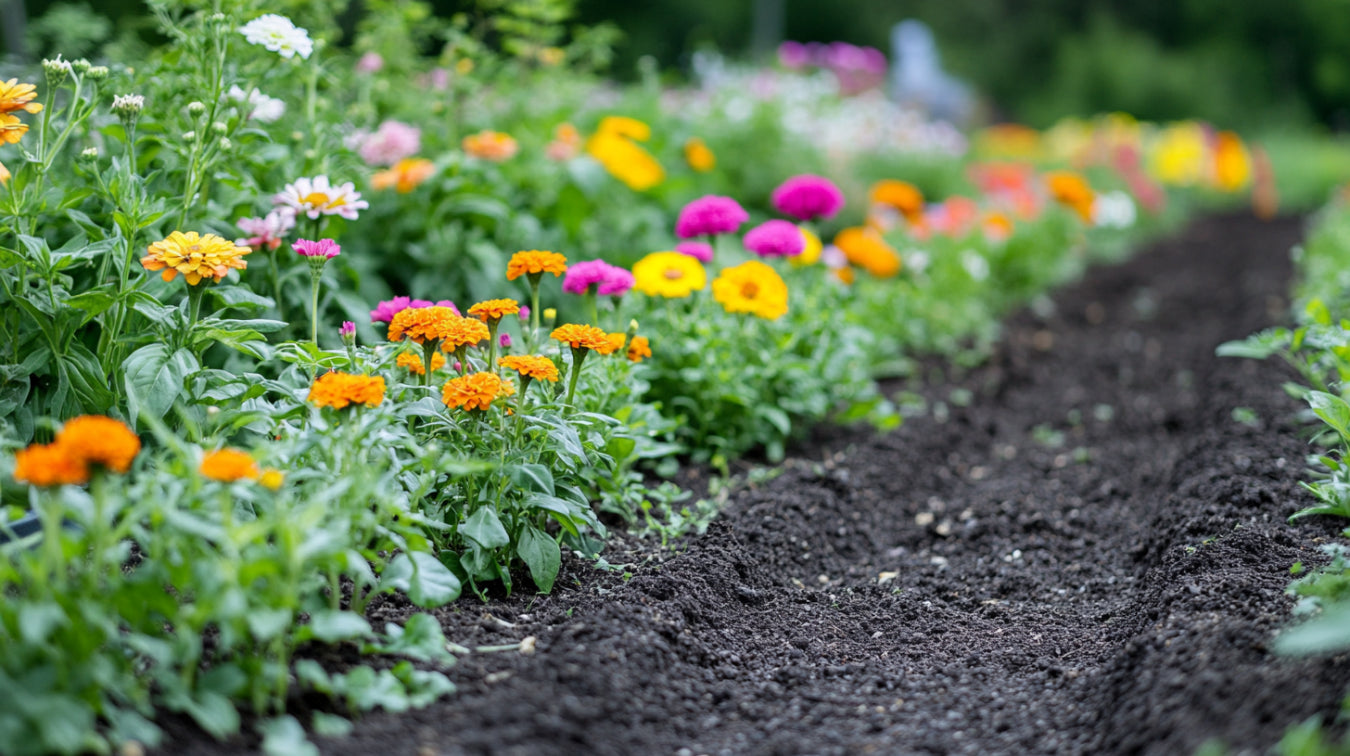
Experiment with mixing flowers and vegetables. Nasturtiums make excellent companions for squash and cucumbers, attracting aphids away and acting as trap crops. Sunflowers can provide shade and support for climbing beans, offering both structural aid and eye-catching blooms.
Taking Your Garden Indoors: Thriving Year-Round
Exploring Indoor Gardening
For those who wish to enjoy greenery year-round, indoor gardening offers a fantastic opportunity to cultivate plants anytime, anywhere. Houseplants such as spider plants, peace lilies, and orchids not only enhance your indoor space but also improve air quality and reduce stress.
Create an indoor herb garden in your kitchen with easy-to-grow options like mint, basil, and rosemary. These herbs provide fresh flavor year-round and add a delightful aroma to your indoor space.
Indoor Gardening Tips and Considerations
When starting an indoor garden, consider the light levels available. South and west-facing windows typically provide the brightest light, ideal for sun-loving species. East and north-facing windows are suitable for low-light plants such as snake plants and pothos.
Humidity can be a concern in indoor environments, particularly during winter when heating systems dry the air. Use a pebble tray with water or a humidifier to maintain optimal humidity levels. Regularly misting tropical plants can also mimic their natural habitat.

The Joy of Garden Design: Creating Aesthetic Appeal
Design Principles for a Stunning Garden
Designing a garden involves more than simply choosing plants—it's about crafting a visually appealing space that delights and engages the senses. Begin by establishing a focal point such as a dramatic plant, a water feature, or a sculpture that draws the eye and anchors the design.
Employ the principle of repetition by using similar plants and colors throughout the space to create a cohesive look. Balance height and form, placing taller plants at the back or center of beds, with shorter ones at the front to ensure visibility.
Incorporating Hardscapes for Structure
Hardscaping elements like paths, walls, and patios complement the softscaping of plants and define the garden's layout. Use materials like stone, gravel, or wood to create paths that encourage exploration and guide visitors through your space.
Complement your planting scheme with strategic lighting, highlighting key features and extending the garden's usability into evening hours. Solar lights are an eco-friendly choice that accentuates pathways and landscape features.
Educational Opportunities and Community Engagement
Sharing Knowledge and Inspiring Others
Gardening offers endless opportunities for learning and teaching. Join gardening clubs or attend workshops to exchange knowledge with fellow enthusiasts. Hosting an open garden day can inspire your community, showcasing the beauty of locally suitable plants and encouraging sustainable practices.

Engage with online gardening forums or social media groups to share tips, photos, and experiences. This collaborative spirit fosters a sense of community and helps cultivate a network of passionate gardeners.
Supporting Local Biodiversity
By designing gardens with native plants, gardeners support local wildlife and enhance biodiversity. Native plants offer essential habitat and food sources for bees, butterflies, and birds native to the area.
Establishing pollinator-friendly spaces with a variety of nectar-rich flowers ensures a healthy ecosystem. Bee hotels or butterfly gardens can provide shelter and attract beneficial insects, enhancing the biodiversity of your garden and beyond.
The Therapeutic Benefits of Gardening
Physical and Mental Health Returns
Gardening transcends the act of planting; it can be a balm for the soul. Engaging with nature through gardening provides physical exercise and mental relaxation, contributing to a healthy lifestyle.
Studies have shown that gardening can lower stress, improve mood, and foster a sense of accomplishment. Being outdoors reduces cortisol levels, promotes cardiovascular health, and encourages a connection with your surroundings.
Gardening as a Mindfulness Practice
Practicing mindfulness in the garden enhances the experience of being present. Pay attention to the sensory elements—the scent of earth, the sound of rustling leaves, the vibrant colors of flowers.

Every garden task, from planting bulbs to watering, can be an opportunity to slow down and engage fully with the present moment. This practice cultivates patience and gratitude, offering peace amidst the hustle of modern life.
Conclusion
Gardening is a journey infused with creativity, discovery, and tranquility. By using a zip-code-specific planting calendar, understanding regional climates, and selecting suitable plants, gardeners can create thriving oases that amaze with each season.
Whether you embark on this journey alone or build a community of fellow gardeners, Plantology is here to support you with quality plants and expert advice tailored to your unique environment. Explore the endless possibilities of your garden and relish in the joy it brings every day.
Start your gardening adventure with Plantology at Plantology USA, where a world of vibrant and tailored beauty awaits.

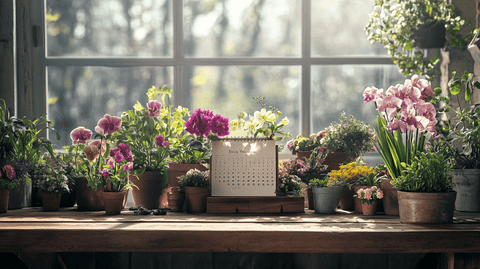











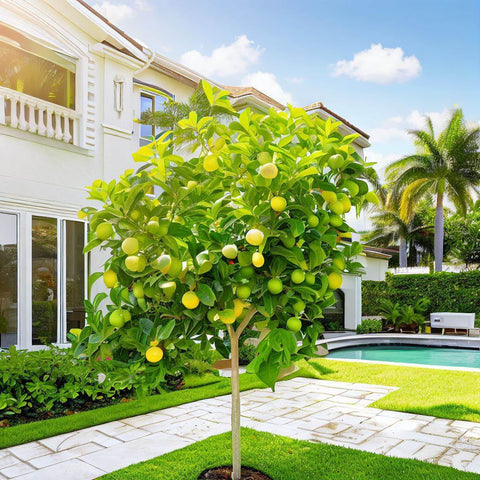


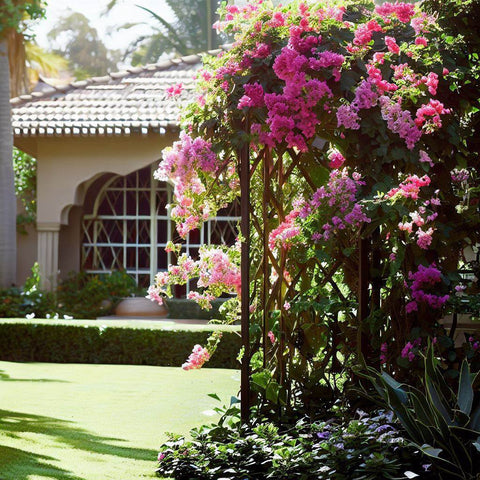
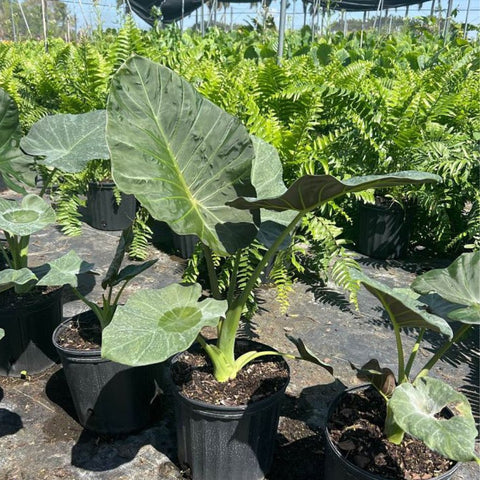
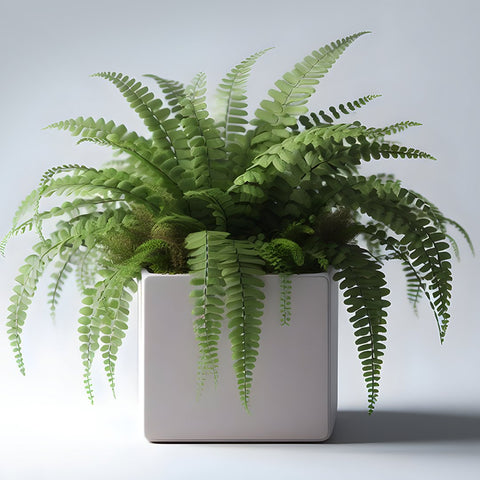

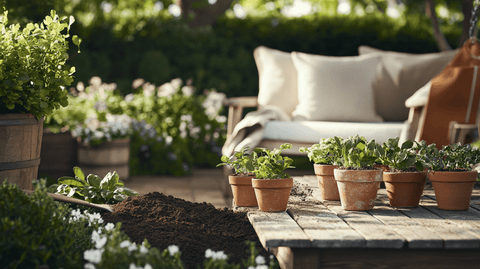









Comments (0)
There are no comments for this article. Be the first one to leave a message!